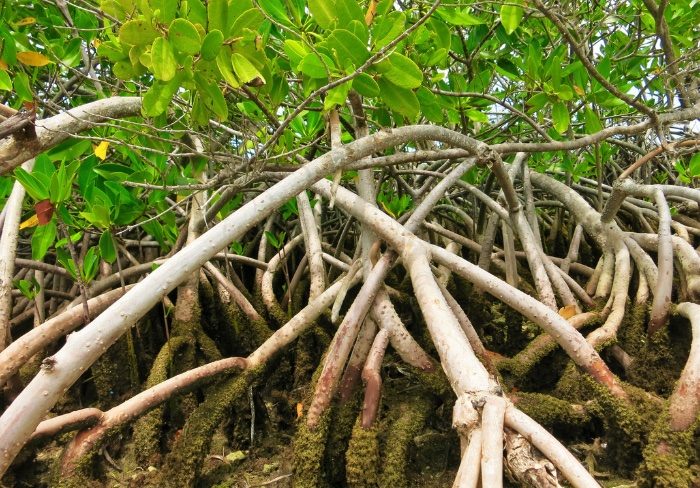
Mangroves are tropical trees that form a boundary between the land and the sea. An acre of mangrove trees can sequester between 50—220 metric tons of carbon in their lifetime, which is almost five times as much as tropical upland forests and 50 times that of some terrestrial forests.
But mangroves are in danger. Almost 50% of mangroves worldwide have been destroyed in the past 50 years, and if we continue on our current trajectory, there will be no mangroves left in 100 years.
The Importance of Mangroves
One of the most important functions of mangrove forests is as carbon stores. The trees suck carbon dioxide from the air, and then store it above ground plant in grasses, branches, and leaves, and below ground in the roots.
In addition, it is also stored in the soil and sediment that collects around the roots. Most mangrove carbon is stored below ground as large pools in soil and dead roots. Mangrove soil can store up to three times as much carbon as above ground biomass. This high carbon accumulation rate is promoted by the slow decomposition of organic material in hypoxic sediments found in mangroves, seagrass, and salt marshes. And if undisturbed, the carbon can stay there for millennia, as opposed to decades in terrestrial forests.
And mangroves are so much more than just carbon stores. On top of their extraordinary carbon capture and storage abilities, they also form complex ecosystems in their intricate network of roots, which allow microbial mats to grow in their sheltered crevices. These mats are constantly respiring and act as carbon sinks.
The compact roots also provide storm surge protection, costal stabilization and erosion protection, as well improving water quality by filtering out sediments and pollutants.
Because mangroves are so sheltered and nutrient rich, they create livelihood opportunities for local communities because they form nursery habitats for many commercial fish and shellfish. They also support a biodiversity of marine and terrestrial flora and fauna by providing an essential habitat.
Protecting and Restoring Mangroves
Between 2000 and 2012, almost 300 million tons of CO2e were emitted as a result of mangrove deforestation. Greenhouse gas emissions from mangrove deforestation globally generates as much as 10% of emissions from all forms of deforestation, despite being 140x smaller than tropical deforestation.
That’s why protecting our remaining mangrove forests is vital, as is restoring and re-growing forests to replace those we’ve lost.

 Giles Cadman
Giles Cadman 
